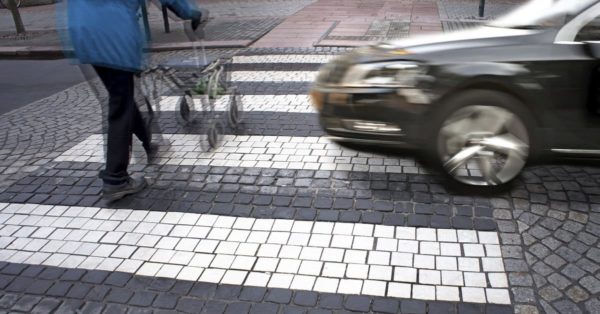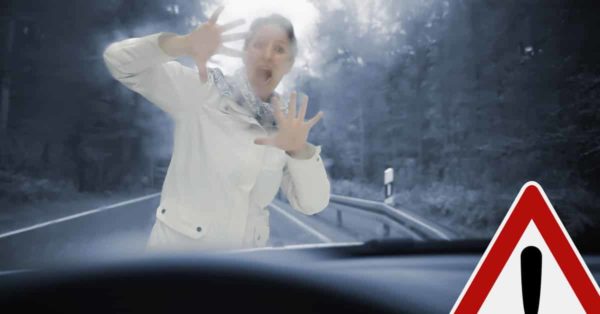
Car accidents involving a pedestrian injury after they are hit while walking frequently result in serious injury or death. Contrary to what you might think, however, the driver is not automatically responsible. Liability for a collision, whether it causes a personal injury or a death in Idaho is determined by each party’s conduct, not their mode of transportation. If the pedestrian is at fault for the incident they are unable to recover for their own injuries. This is the basic underlying idea of the personal responsibility in Idaho injury law.
Idaho Law Regarding Pedestrians
A pedestrian often has the right of way. However, like motorists, pedestrians have a duty to exercise reasonable care while traveling to and from their destination. They must obey the rules of the road and all applicable traffic laws. This is just like when driving a motor vehicle. Pedestrians who fail to live up to their duties can be found negligent if their actions cause injury or property damage. Idaho law has a number of rules applicable to pedestrians. And, some of the same rules, and other special statues, apply to bicyclists.
Here are some examples of behavior that could result in an Idaho pedestrian being found responsible for an injury accident:
- Leaving a place of safety to enter the roadway
- Crossing highways or other busy roads without traffic controls
- Walking along bridges, highways, or other areas where pedestrians have no legal access (unless it is an emergency situation)
- Crossing outside of the crosswalk
- Crossing against traffic control signals
- Failing to look before crossing the street and running into the path of oncoming vehicles
Pedestrians can have an opportunity to avoid accident-causing situations. Pedestrian accidents seldom occur outside the roadway. Taking care when entering an area of danger is the best course of action.
Comparative Responsibility And Pedestrian Fault
Sometimes, law enforcement officials will find that both the driver and the pedestrian were partially responsible for the accident. For example, the driver of the car may have run a red light and the pedestrian may have been crossing in an inappropriate location. In cases like this, a percentage of fault is applied to each party.
Idaho is one of the states with a modified comparative fault system with regard to personal injury lawsuits. This means that each party is held liable for damages in accordance with their own percentage of fault. However, plaintiffs can’t recover any damages if they are 50% or more at fault.
When The Driver is Responsible For Hitting a Pedestrian
When drivers hit pedestrians they can be responsible for compensating the injured person.  Determining the amount of compensation can be a complex process. .\
Determining the amount of compensation can be a complex process. .\
What is the Value Of the Claim of A Pedestrian Hit By a Car?
There is no “typical” or “ordinary” settlement amount for a types of accidents. Relevant things that must be considered when evaluating a claim for damages include:
- The severity of your injury: Soft or connective tissue (muscles etc.) injuries are perceived as less severe and thus receive less compensation than broken bones or other injuries that are easily detected through a medical examination.
- The extent of your medical treatment: This includes whether or not you’ve seen any specialists, although chiropractors and other alternative medicine providers carry less weight than physicians and physical therapists.
- Time you’ve missed from work: Lost wages should be reimbursed at full value.
- Whether or not your injury has limited your ability to perform your previous work duties in the future: An injury that will require you to stop working or seek employment in a lower paying field will result in higher compensation.
- Ways in which your injury has affected your daily routine: If you’re not expected to make a full recovery, your settlement should take into consideration whether or not you’ll need extra help with daily tasks.
- If your actions in any way contributed to the accident: Pedestrians are usually not found liable for an accident, but you would receive less, maybe no, compensation if you negligently stepped off the curb in front of a moving vehicle or traveling where pedestrian access is prohibited.
How Do Medical Expenses Get Paid When A Person is Hit By A Car?
Most often medical expenses relating to a pedestrian injured by a car will first be paid by the pedestrian’s health insurance company. The health company will ultimately get repaid by the at fault driver’s auto insurance carrier. This can be a more complex process than you might think.
If an injured person does not have health insurance dealing with medical bills can be a nightmare. Unfortunately, the medical provider is not required to wait for the at fault driver to get paid. It is the injured person who has to deal with getting the bills paid.
Ultimately a claim against the driver can hopefully be settled with the driver’s insurance company. The insurance company will likely offer a settlement based on its evaluation of the factors above and the company’s own policies. Different insurance companies approach these things differently.
Generally, a good personal injury attorney can help you negotiate a batter settlement. Or can sue the driver if there are disagreements about fault and the ultimate value of a claim. An insurance adjuster’s job is to save his employer money; it’s not to make sure that you’re being treated fairly. With an experienced attorney on your side, you’ll have someone to advocate for your best interests throughout the settlement or litigation process.
If the driver who injured you does not have auto insurance, your underinsured/uninsured motorist coverage might be required to make up the difference. This coverage is required to be offered by law to all Idaho residents seeking car insurance, unless the purchaser of the policy waives this coverage in writing. Underinsured/uninsured motorist coverage protects you even when you are involved in an accident as a pedestrian.

